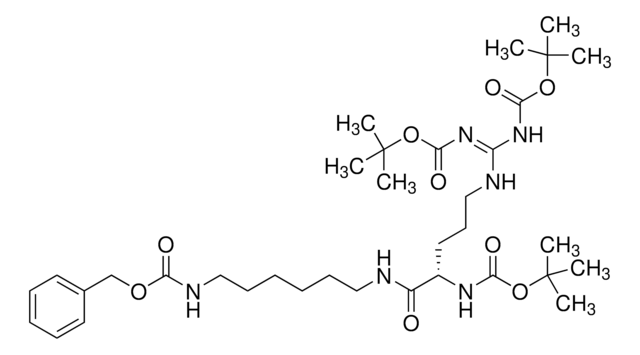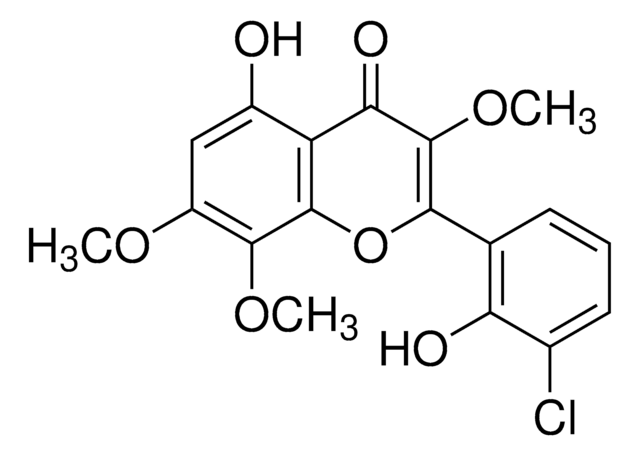R108
Ro 41-0960
solid
Sinônimo(s):
2′-Fluoro-3,4-dihydroxy-5-nitrobenzophenone
About This Item
Produtos recomendados
forma
solid
Nível de qualidade
condição de armazenamento
protect from light
cor
yellow
solubilidade
H2O: slightly soluble <0.7 mg/mL
45% (w/v) aq 2-hydroxypropyl-β-cyclodextrin: 1.0 mg/mL
ethanol: soluble
temperatura de armazenamento
2-8°C
cadeia de caracteres SMILES
Oc1cc(cc(c1O)[N+]([O-])=O)C(=O)c2ccccc2F
InChI
1S/C13H8FNO5/c14-9-4-2-1-3-8(9)12(17)7-5-10(15(19)20)13(18)11(16)6-7/h1-6,16,18H
chave InChI
RQPAUNZYTYHKHA-UHFFFAOYSA-N
Informações sobre genes
human ... COMT(1312)
Aplicação
Ações bioquímicas/fisiológicas
Características e benefícios
Atenção
Código de classe de armazenamento
11 - Combustible Solids
Classe de risco de água (WGK)
WGK 3
Ponto de fulgor (°F)
Not applicable
Ponto de fulgor (°C)
Not applicable
Equipamento de proteção individual
Eyeshields, Gloves, type N95 (US)
Certificados de análise (COA)
Busque Certificados de análise (COA) digitando o Número do Lote do produto. Os números de lote e remessa podem ser encontrados no rótulo de um produto após a palavra “Lot” ou “Batch”.
Já possui este produto?
Encontre a documentação dos produtos que você adquiriu recentemente na biblioteca de documentos.
Nossa equipe de cientistas tem experiência em todas as áreas de pesquisa, incluindo Life Sciences, ciência de materiais, síntese química, cromatografia, química analítica e muitas outras.
Entre em contato com a assistência técnica








